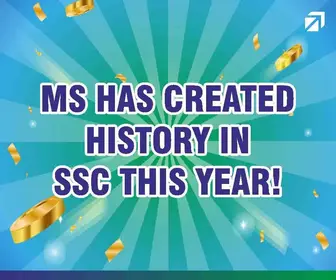

Both US and Russia have definitely shown magnanimity and broad heart as far as their relationship is concerned with regard to outer Space.
Signing agreements recently to continue their mutual co operation on Space is the move in the right direction.
Despite severe rift in their relationship following the war in Ukraine, they have shown sufficient maturity to not let it mar their co operation in the arena of Space exploration.
They have clearly shown that differences in our planet must be kept here and when we go to Space we must go there as a united team to face all challenges jointly as representatives of earth and humanity as a whole rather than as Americans, Russians or people of any other nation.
There are occasions when we must set aside all our planetary disputes and be united and that’s while going to Space. In outer Space we have just one identity – humans or in sci-fi language ‘earthlings’.
In this kind of a scenario, European Space Agency’s decision to “break off” existing ties on Space related activities with Russia due to the ongoing Ukraine war is “childish”.
Clearly being close to the theatre of war and facing a lot of its brunt much more directly than US, they definitely wanted Russia to pay its price in some fashion. But then whether snapping ties of mutual collaboration on Space is the right move is debatable.
The European Space Agency has in the last few days decided it won’t collaborate with Russian space agency Roscosmos on a series of lunar missions which were due in the near future Luna 25, 26 and 27.
The three missions were starting later in 2022 with Luna 25. Luna 26 was scheduled to follow two years later and Luna 27 the following year.
Just one month ago European Space Agency suspended its joint mission to Mars with the Russians postponing the launch of an ESA-built rover that had been scheduled for September.
Fortunately, International Space Station has still remained untouched by the political fallout of Ukrainian war and is functional where space agencies of several countries including US- Russia, ESA have a stake. Space is one of the few areas where despite some resentments being voiced Russian scientists have also continued to collaborate with other scientists of the world including American, European and others.
The European Space Agency has almost shown its helplessness pointing out that Russian aggression against Ukraine and the resulting sanctions put in place had made it virtually “impossible” for them to implement the planned lunar flights with Russia . They declared that there had been a “ fundamental” change of circumstances.
Russia’s President Vladimir Putin had just a day earlier than ESA decision announced that Russia will send an unmanned spacecraft to the moon’s surface via the Luna 25 mission later this year.
The US – Russia collaboration in Space seems to have not brought in greater bonhomie between both sides in other areas.
If America and Russia have been able to save their ties on Space, they have not been able to save their cultural ties which have been severed.
The intergovernmental Memorandum of understanding between the U.S. and Russia on the principles of cooperation in the fields of culture, the humanities, the social sciences, education, and the mass media was signed in Moscow on September 2, 1998.
The idea was basically to carry out joint projects and activities of government and NGOs in both countries and formulate recommendations on specific aspects of the development of cultural cooperation. The areas of cooperation was wide including various fields of culture, humanities, social sciences, education, and media.
The Memorandum wanted to promote better understanding of each other’s culture, particularly through organisation of theatrical performances and art exhibitions.
This important agreement which gave a lot of fillip to people to people exchanges was officially annulled by Russia which withdrew from the Memorandum in the wake of the Ukraine conflict.
Following the Ukraine conflict US also started winding down all direct communications and collaborative work, research, programmes or projects with Russian government. This particularly impacted the museum and art world in both countries.
Cultural and people to people interactions and exchanges build up knowledge about both countries which helps in forging stronger socio-political and economic ties.
The Memorandum had provision for exchange of scholarly publications, radio and television progams, films, and other audiovisual materials; organization of lectures, seminars, and joint scholarly research, study of the Russian and English languages in the United States of America and the Russian Federation, respectively, exchanges and contacts between journalists, publishers, and mass media associations, cooperation between youth, women’s associations.
Russian Space Agency Roscosmos and American space agency NASA have agreed and will now be flying each other’s astronauts and cosmonauts to the International Space Station (ISS) in “ integrated flights”.
However NASA has been careful to point out that there will be “no exchange of funds” between both the countries. Naturally it would go against the whole principle of placing economic sanctions on Russia for waging war against Ukraine.
NASA spokesman, Josh Finch, has clarified that “flying integrated crews ensures there are appropriately trained crew members on board the station for essential maintenance and spacewalks.”
The mutual agreement takes care of any future contingencies such as a problem with any crew spacecraft, serious crew medical issues, or an emergency aboard the station that requires a crew and the vehicle they are assigned to return to Earth sooner than planned.
The first mission under the arrangement, involving NASA astronaut Frank Rubio and Russian cosmonauts Sergey Prokopyev and Dmitry Petelin, is set to take place in late September. The crew will use the Russian Soyuz spacecraft to reach the ISS.
Another mission, scheduled for the autumn as well, will fly a US Crew Dragon spacecraft. The mission will likely involve the only woman in Russia’s active cosmonaut roster, Anna Kikina.
What is the fall out of the continuing collaboration in the field of space in other areas only future can tell. But sooner a solution comes about would be the best because one would not like the relationships deteriorate to the Cold War era.

